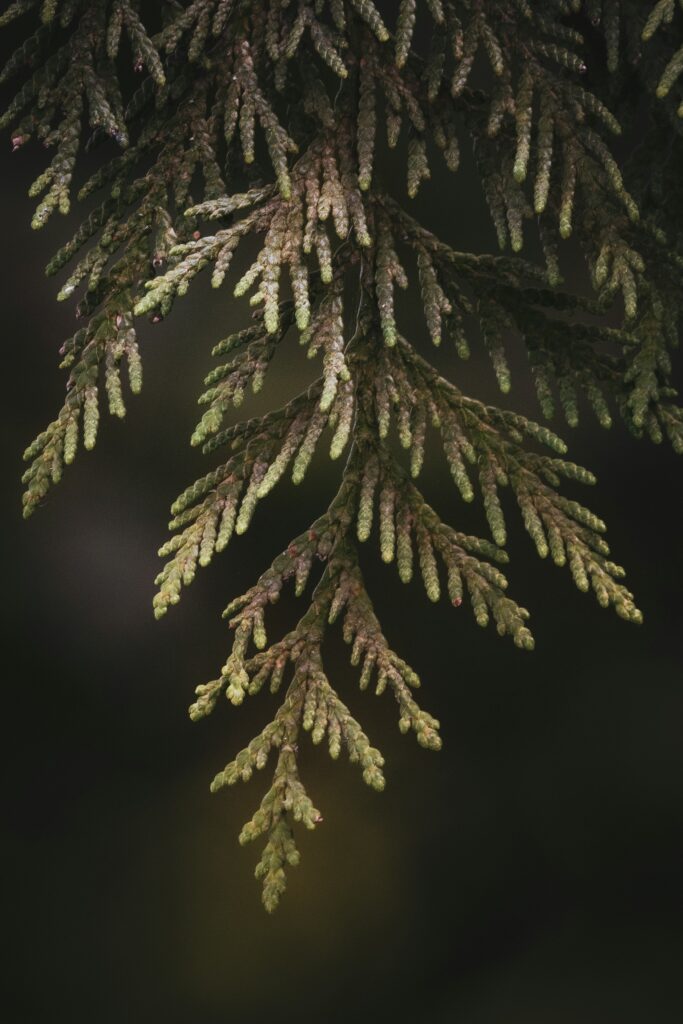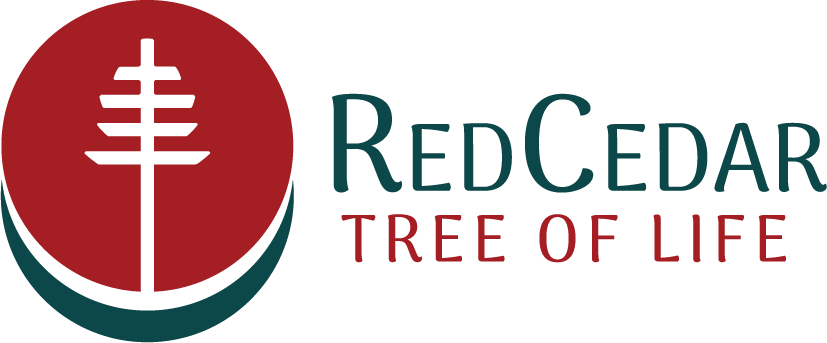RedCedar Tree of Life: What's in a Name?
The “RedCedar Tree of Life” is a concept deeply rooted in the culture and spirituality of
Indigenous peoples, particularly those of the Pacific Northwest region of North America.
The Red Cedar, scientifically known as Thuja plicata, holds immense significance in the
traditions and beliefs of many Indigenous tribes, including the Coast Salish, Haida,
Tlingit, and others.
For these peoples, the red cedar is not just a tree; it’s a symbol of sustenance, shelter,
and spirituality. It’s often referred to as the “Tree of Life” due to its multifaceted uses and
the deep connections it fosters within Indigenous communities.
Here are some key aspects of the Red Cedar Tree of Life:

-
- Practical Uses: The red cedar provides a plethora of practical uses for
Indigenous peoples. Its wood is incredibly durable, lightweight, and resistant to
decay, making it ideal for crafting canoes, totem poles, longhouses, tools, and
various ceremonial objects. The bark of the tree is also used for weaving
baskets, clothing, and other items.
- Practical Uses: The red cedar provides a plethora of practical uses for
-
- Spiritual Significance: Beyond its practical applications, the red cedar holds
profound spiritual significance. It’s often seen as a sacred entity, embodying the
interconnectedness of all living beings and serving as a bridge between the
physical and spiritual realms. Many Indigenous peoples believe that the red
cedar is inhabited by powerful spirits and ancestors, and they perform rituals and
ceremonies to honour and communicate with these entities.
- Spiritual Significance: Beyond its practical applications, the red cedar holds
-
- Cultural Identity: The red cedar plays a central role in the cultural identity of
Indigenous communities. Its presence in myths, legends, songs, and oral
traditions reflects the deep reverence and respect that Indigenous peoples have
for the natural world. Through the sustainable harvesting and utilization of red
cedar resources, these communities maintain their cultural heritage and pass
down traditional knowledge from generation to generation.
- Cultural Identity: The red cedar plays a central role in the cultural identity of
-
- Environmental Stewardship: Indigenous peoples have a long history of
sustainable land management practices, including the careful cultivation and
preservation of red cedar forests. They recognize the importance of maintaining
the ecological balance of their territories and view themselves as stewards of the
land. By protecting and respecting the red cedar tree of life, indigenous
communities contribute to the conservation of biodiversity and the preservation of
ecosystems.
- Environmental Stewardship: Indigenous peoples have a long history of
Overall, the red cedar tree of life represents a holistic worldview that values harmony,
reciprocity, and interconnectedness with nature. It serves as a powerful symbol of
resilience, cultural continuity, and spiritual wisdom for Indigenous peoples, emphasizing
the importance of preserving traditional life ways and respecting the natural world.
When referring to “red cedar holistic,” it likely encompasses a holistic approach to
health and wellness that incorporates the use of red cedar and its derivatives, such as cedarwood essential oil, cedar leaves, or cedarwood products, in various forms of
healing and therapeutic practices. Here’s how the concept might be understood:
-
- Physical Health: Red cedar and its extracts have been used in traditional
medicine for their potential health benefits. Cedarwood essential oil, for example,
is known for its antifungal, antibacterial, and anti-inflammatory properties. It may
be used in aromatherapy, massage oils, or topical applications to promote skin
health, relieve muscle tension, and support respiratory function.
- Physical Health: Red cedar and its extracts have been used in traditional
-
- Mental and Emotional Well-being: In holistic approaches to health, mental and
emotional well-being are considered integral to overall wellness. The aroma of
cedarwood is often associated with feelings of grounding, calmness, and
relaxation. Therefore, it may be incorporated into practices like meditation,
mindfulness, or holistic therapies to promote emotional balance and stress relief.
- Mental and Emotional Well-being: In holistic approaches to health, mental and
-
- Spiritual Connection: For many Indigenous cultures, including those of the
Pacific Northwest, red cedar holds spiritual significance. Its use in holistic
practices may involve rituals, ceremonies, or spiritual healing sessions aimed at
fostering a deeper connection with nature, ancestors, and spiritual forces. The
presence of red cedar may symbolize protection, purification, and spiritual
guidance.
- Spiritual Connection: For many Indigenous cultures, including those of the
-
- A holistic approach to health often considers the interconnectedness between human health and the health of the environment. Red cedar forests are vital ecosystems that support biodiversity and contribute to environmental balance. Therefore, practices that honor and sustainably utilize red cedar resources align with holistic principles of environmental stewardship and respect for nature.
Overall, a “red cedar holistic” approach integrates the physical, mental, emotional, and
spiritual dimensions of health and wellness, recognizing the profound connections
between individuals, communities, and the natural world. It emphasizes the importance
of utilizing natural resources in a sustainable and respectful manner while honouring
cultural traditions and indigenous knowledge.
Michelle Kotowki
